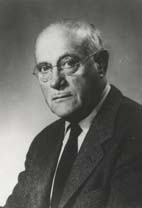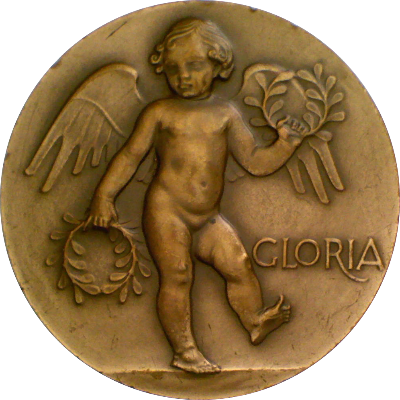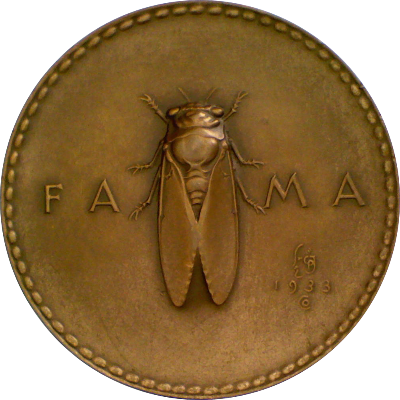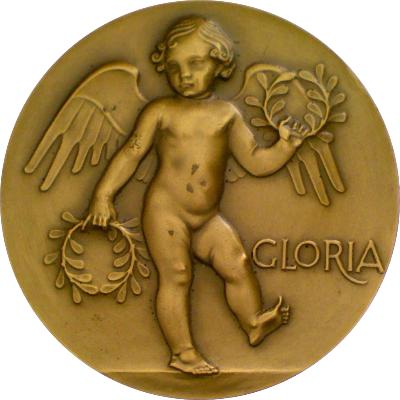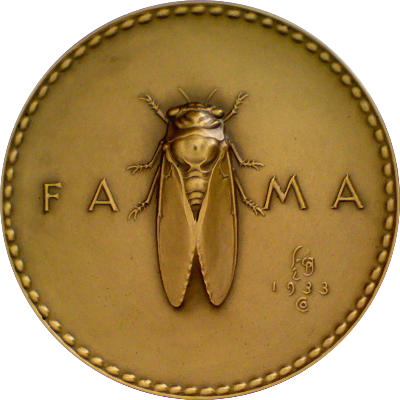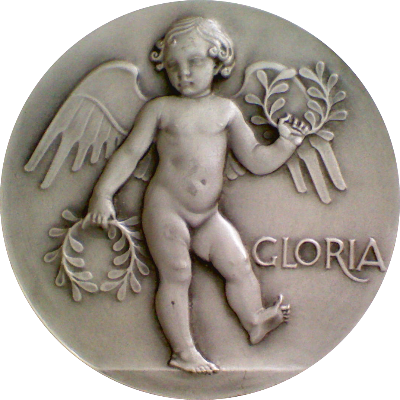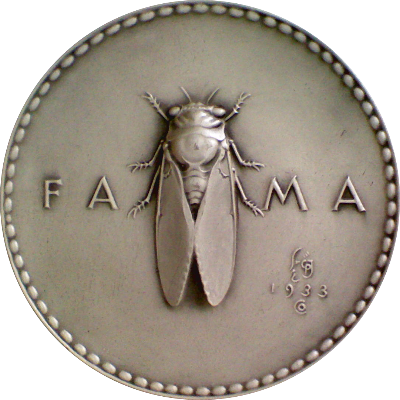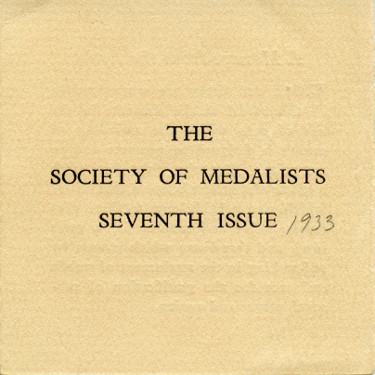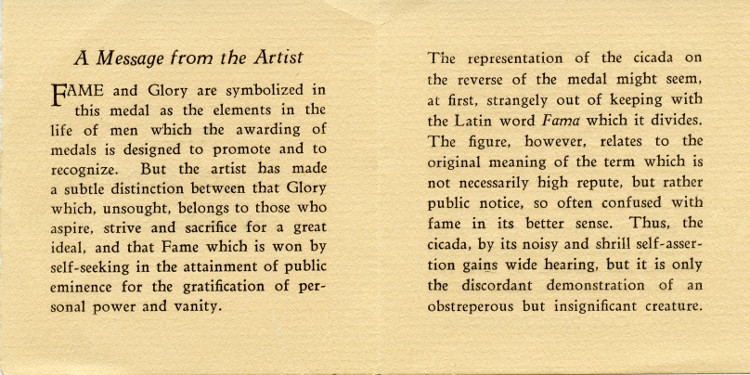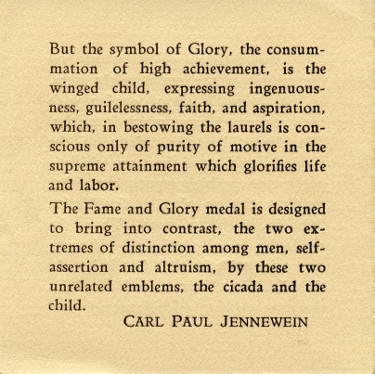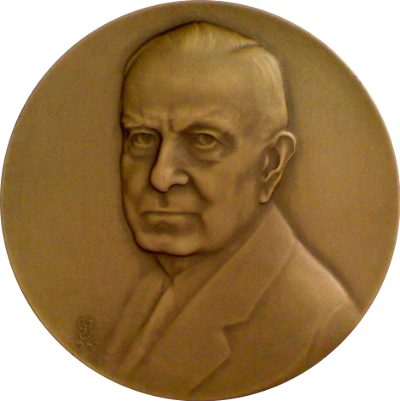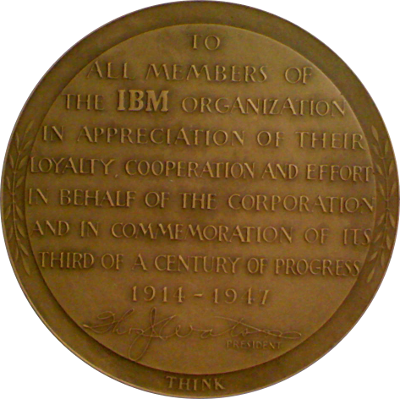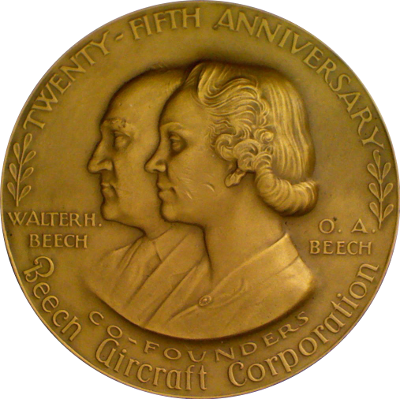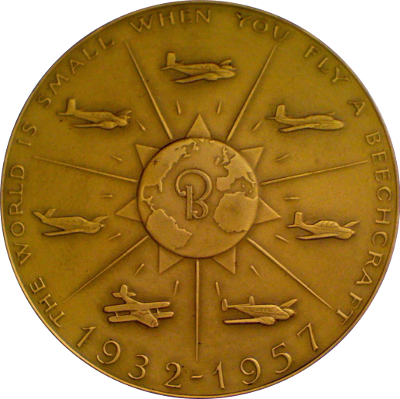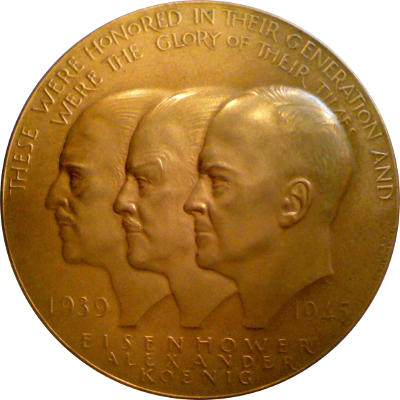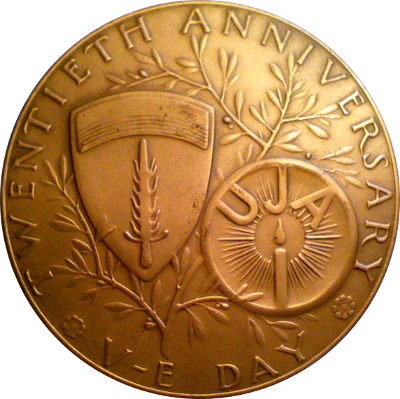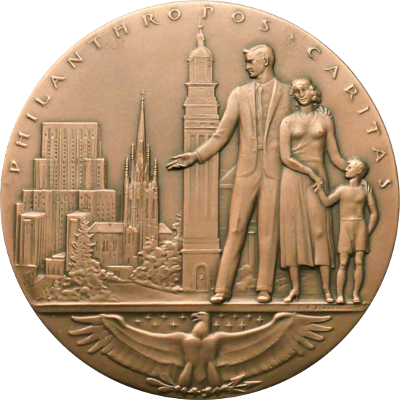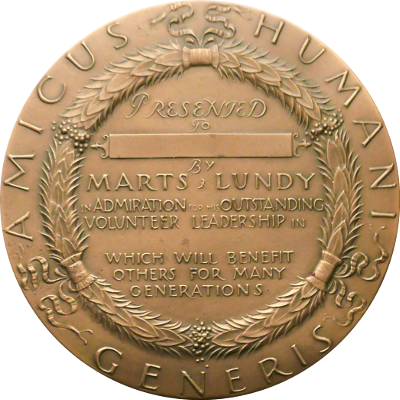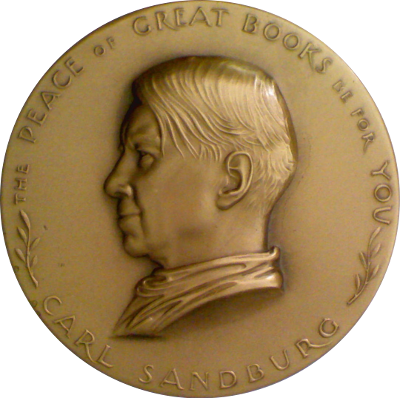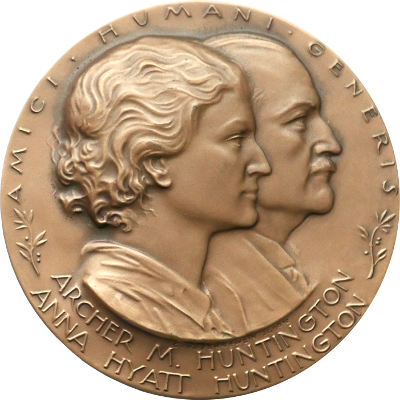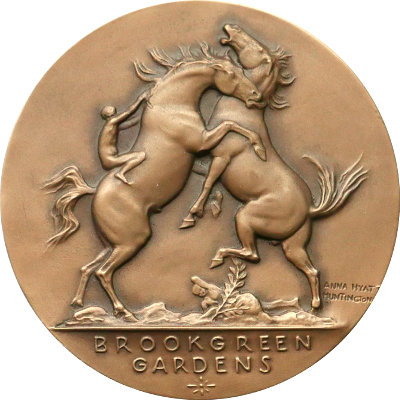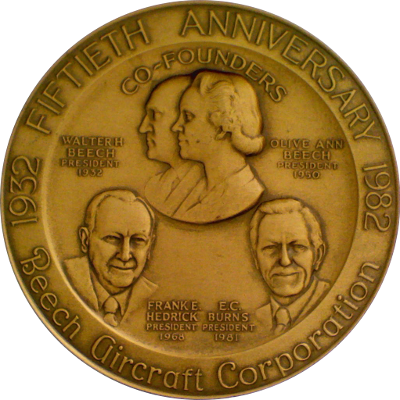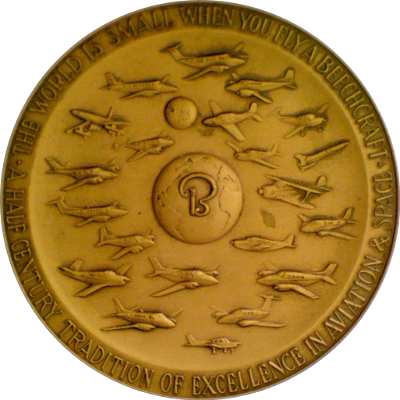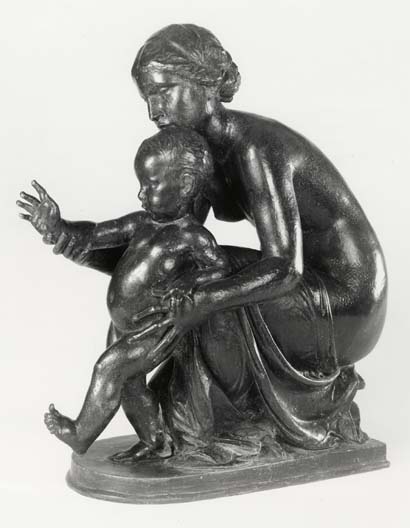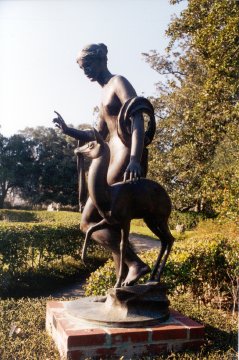C. Paul Jennewein, one of eight children in his family, was born in 1890 in Stuttgart, Germany. His father was a die engraver and often allowed his young son to watch him work, thereby kindling an intense interest in drawing, engraving, and etching. Paul did not enjoy school, often saying "I wasn't good at anything in school except art." Thus, at age 13, he left school to become an apprentice to artisans at the Kunstmuseum in Stuttgart. For three years, he studied painting and sculpture and took courses in architectural drawing and art history at the university in Stuttgart. He immigrated to the United States in 1907. There he was apprenticed to Buhler and Lauter, a New York City firm of architectural sculptors and commercial modelers. In the evenings, Jennewein attended classes at the Art Students League, where virtually all important artists of the time either taught or took classes. He studied with George Bridgman and Dewitt Clinton Peters.
Within four years of his arrival in the United States, Jennewein was receiving outside commissions that drew upon his skills as an ornamental sculptor and as a painter. One of his first independent jobs was for the Pompeiian-style bas-relief decorations for the Fifth Avenue home of John D. Rockefeller. Soon after, he received a commission to paint six mural panels for the Woolworth Building, which was known as the "Cathedral of Commerce," and at the time, was the tallest building ever constructed.
Jennewein became a United States citizen in 1915 and enlisted in the National Guard, serving as a private near the Texas-Mexican border with the Seventh Regiment. He received an honorable discharge in June 1916 to accept the Prix de Rome award for the sculpture at the American Academy in Rome.
The Prix de Rome was one of the most coveted awards an artist could receive. Each year, it was awarded to a sculptor, a painter, an architect, and two classical students. Jennewein spent three years in Rome pursuant to the award, creating sculpture and traveling throughout Italy and Greece studying the classical masterworks. These years were crucial to the development of Jennewein's style and strongly influenced the direction of his later work.
While in Rome, a young Italian painter and linguist named Gina Pirra was his Italian tutor. The two fell in love, were married, and eventually had five children. Some of Jenneweins finest works were inspired by his family. First Step (1919) was based on his wife Gina and son Paul, and Mimi and Squirrel (1922), a portrait of his daughter Mimi, are beautifully composed and meticulously rendered groups. Jennewein returned to New York in 1920, and within an astonishing sixteen months wrote, "I have so much work to do now that I am not able to take on work for many years." By 1926, he had settled with his family at 11 Serpentine Trail in Larchmont, and by 1928 he had established his studio in the Bronx. During the 1920s and 1930s, Jennewein worked with many of the leading architects of his time and became one of the most respected and sought-after sculptors of the period.
One of his first important commissions was The Philadelphia Museum of Art Pediment, which was designed in the style of the Parthenon, and features Jenneweins thirteen polychrome sculptures of Greek gods and goddesses in its central pediment. As soon as it was completed, it evoked an enthusiastic response, because color in architecture had not been used since the third century in Greece. A result of his initial research for the Philadelphia project was a small sculpture called Greek Dance (1926), which was popular and produced in an edition of twenty-five bronze casts. By 1931, he had been elected to membership in the National Academy of Design and the National Institute of Arts and Sciences.
Jennewein was also commissioned for the building boom that was taking place in Washington, D.C. He created Nymph and Fawn for the Darlington Memorial in Judicial Park and Eagles for the Arlington Memorial Bridge. At the Department of Justice Building, Jennewein coordinated all aspects of the decoration facades, statues, reliefs, panels, sculptures, and light fixtures. The building was completed in 1933 at the height of the Art Deco period. Architect Charles Moore calls its unified ornamentation a testament to the high character and exquisite beauty of the Jennewein sculpture. A study for the relief Law and Order on the Constitution Avenue entrance of the Department of Justice can be found on the outdoor patio of his house in Larchmont.
In New York City, Jennewein created the main entrance to Rockefeller Center at the British Empire Building. The nine cast-bronze figures representing industry form a major component of the Rockefeller Center façade overlooking Fifth Avenue. Another important accomplishment was the 1939 Worlds Fair pylons, which embodied many elements from Greek mythology. In the same year, he designed dramatic columns for the entrance to the main branch of the Brooklyn Library. Gold-leafed characters from mythology, fables, and American fiction are carved into the 50-foot pylons.
In 1954, two allegorical relief panels representing Ceres and Orpheus were installed over the entrances to the State Dining Room and the East Room in the White House. At this point in his career, Jennewein designed many commemorative medals, including portraits of Mark Twain, Woodrow Wilson, Daniel Boone, Sacajawea, and Pope John, as well as medallions for the Hall of Fame, the United Jewish Appeal, and the medal for the inauguration of President Truman.
Two of Jennewein's children also contributed to the arts locally. In 1941, while a student at Yale School of Fine Arts, his daughter Mimi won a contest to paint three panels of a mural depicting the life of James Fennimore Cooper, which was installed in the Mamaroneck High School Post Road cafeteria. The mural can still be seen and enjoyed today in the MHS Apple (A Place People Learn Excellence) center at the school. His son Peter was the architect of the Mamaroneck Village War Memorial, which incorporates one of Paul Jennewein’s sculptures.
Paul Jennewein was 87 when he died at the Larchmont Shore Club in 1978. Two years later, a retrospective exhibition of his work was held at the Tampa Museum of Art, which was bequeathed most of the works from his estate.
Large portions of this biography courtesy of the Larchmont Historical Society.
